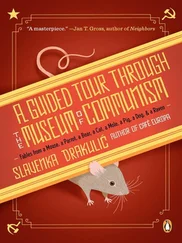She had been impaled alive. At the hospital, people rushed her through the corridors on a stretcher, shouting, Hurry, hurry, hurry. In the operating room the white-masked nurse leaned over her and said, Take a deep breath and count to ten. She inhaled the ether, never dreaming how many more times in her life she would be subjected to its smell. Finally she drifted off into blissful oblivion.
The doctors were not sure if she would survive. But survive she did. Her young body fought back. She recovered, immediately learning how to accustom herself to the pain that had taken up residence in her body and become a subtenant she would never be able to evict.
The man who had had the presence of mind to pull the rod out of her body helped Alex lay Frida out on the billiard table in a nearby bar while they waited for help. You lay there on the green felt, naked, covered in blood and dusted in gold. Passersby thought you were an injured bar dancer, that’s why they called you ballerina. You were so beautiful, Alex told her the day after the operation as he sat by her side, holding her hand.
When she was a child she had had to learn how to lie still, and this proved useful after the operation. Immobile, encased in a cast from head to foot, for the first few days all she could do was cry. I’m used to pain so that’s good, she told Alex, as if he, not she, needed comforting. She survived and, despite the pain, felt relieved. But from time to time she would be overwhelmed by an entirely new awareness of how fragile and transparent everything around her was. Having seen death from the other side, she had come to an icy certainty. As if she had suddenly acquired the ability to see through people and past her own reality.
In the hospital that old feeling of her body being a foreign entity returned — that experience of self-separation she remembered when she had escaped to the little girl on the other side of the windowpane. She became aware of her body as a mechanism; the heightened sharpening of all her senses allowed her to keep track of the pain — when it appeared and where, how each part of this mechanism functioned quite irrespective of her conscious will, like an automaton. She realized how much the condition of her body affected her feelings, behavior, thoughts. The fact that this was her body no longer meant the same thing to her after the accident.
She had already learned (polio: lesson number one) how difficult it is to imagine somebody else’s pain, even when that somebody else is one’s own child. Her mother was struck dumb with shock and her father fell ill. His health had already deteriorated from the increasingly frequent epileptic seizures that plagued him. During the month that she was immobilized in the hospital her mother visited her twice and her father only once. It all seemed too much for them. Had it not been for her sister Matilda, Alex and her school friends, she would have been utterly alone. She shared a room with twenty other patients, lying on her back in a coffinlike plaster carapace. She could not move a single part of her body except for the toes of her left foot and the fingers of her left hand.
At first the pain was unbearable. Again she lacked the words to explain how excruciating it was. She could say that it was a piercing pain and that it penetrated every part of her body. But she gave up before even starting. Not only would no one understand, but soon they would get tired of trying. How could she describe a body on fire, a searing wound? By using these words? She knew that words would not help people feel what she felt. Once when she was at church with her mother and sisters, a young woman collapsed in the middle of the priest’s sermon. Her limbs started shaking uncontrollably and a terrifyingly deep, menacing male voice issued from her mouth. It’s the devil, the devil, cried the priest, frantically brandishing the cross over her.
I am possessed, she thought with horror as she lay there in the hospital, convinced that that same demon was now inhabiting her flesh and bones.
She thought it would be easier to bear the pain if someone at least knew how she felt. She consoled herself the only way she knew how, the way her mother had taught her. It’ll go away, she would tell her visitors. When I recover everything will be the same as it was before. Alex agreed. Of course it will, he told her, of course everything will be the same.
At night she watched death flit around her bed and dreamed of being a yellow butterfly.
Later, much later, she painted a picture that she called The Dream . It took time and strength for her to paint it. The first few nights in the hospital she was afraid that death would claim her in her sleep. How to defeat death? How to cheat death? How to drive it away? She felt better once she had drawn the skeleton. Like the papier-mâché skeletons they sold at the market on the Day of the Dead, her own painted death became something of a household fixture. She laid the skeleton down on her bed and propped the skull up with two pillows to make it more comfortable. She placed a bouquet of flowers in its hands.
Thus she gave shape to her fear, but this did not mollify death. What is disturbing in the painting is not the skeleton, but the plant above the sleeping Frida, spreading its roots, weaving its web, waiting.
She spent another three months bedridden at home. A wall rose around her. She was already isolated, her hopes shattered, trapped in a body that would never recover and from which she could escape only occasionally.
But her crushed body did not stop her from being loud and demanding. Once again she heard her mother’s voice saying, It’ll go away, like a magic incantation that would restore her health. She did not know how else to comfort her daughter. Doña Matilda did not understand why such a tragedy had to befall her family. As a good Catholic, she agonized over this question and looked to heaven for an answer. Why did the good Lord, to whom she prayed every day, let her daughter suffer so much? Wasn’t it enough that she had had polio and that it had marked her for life? Or was God punishing her, Matilda? Frida knew that early every morning, before the insufferable heat set in, her mother would go to the nearby church, dip her fingers in the holy water of the stone font at the entrance, kneel and cross herself. Then she would sit down in a back pew, pull her scarf down over her brow like an old woman and pray, pray for God to take pity on her poor unfortunate child.
Her nerves already frayed, Doña Matilda tortured herself with further doubts. Frida, not wishing to add to her mother’s worries, pretended to be brave. And brave she was, with a touch of pathos in her lies, trying to dispel any concerns those closest to her might have. Look at me, why, I’m fine, getting better and better, she would say. Don’t worry about me, Mama, I’ll survive. She found the strength to cheer up others and cut short the pity she so despised. After a few months, when Frida really was better, Doña Matilda commissioned a thanksgiving mass, convinced her prayers had been heard. For a while — quite a while, in fact — her humor improved.
Frida never asked herself why this had had to happen to her. She did not believe there was anyone who had the answer to such a question.
Once she was better and the pain in her back and leg became bearable, boredom set in. She asked her friends to visit, to write and send her books. She had the cook prepare special dishes, made only for her. She asked Kity to stay and keep her company, the way she used to. In her letters to Alex, she complained about how bored she was and how she envied him his coming travels around Europe. But boredom was a sign that she was on the mend.
Sometimes she would embroider linen, but mostly she read. Doña Matilda knew, however, that her daughter could not spend all her time reading. She thought painting might be the answer. Frida had spent that summer working at the printing shop of a friend of her father’s. She would come home talking excitedly about the Swedish artist Anders Zorn, whose paintings she copied. Her father had taught her how to retouch photographs and she was already well versed in color tones and brushstrokes. He would sometimes commend her patience and concentration. And so Doña Matilda decided that painting might provide Frida with a temporary distraction and pastime until she fully recovered. Once her bones had set and she could stand up, she would have no need of it anymore. That was what she told her daughter the morning when she brought her the paints and brushes, brushes Frida knew well because they were her father’s.
Читать дальше












